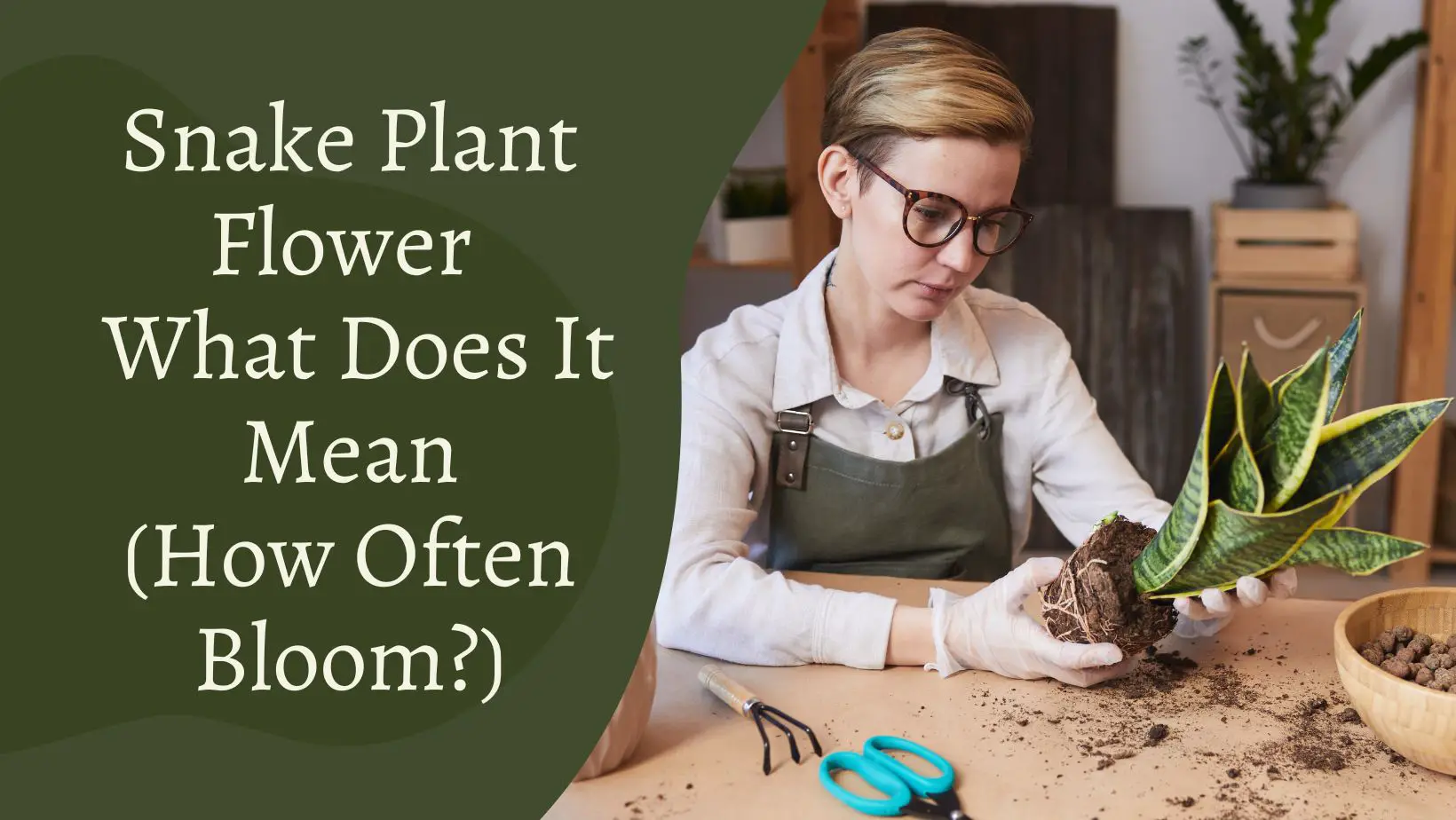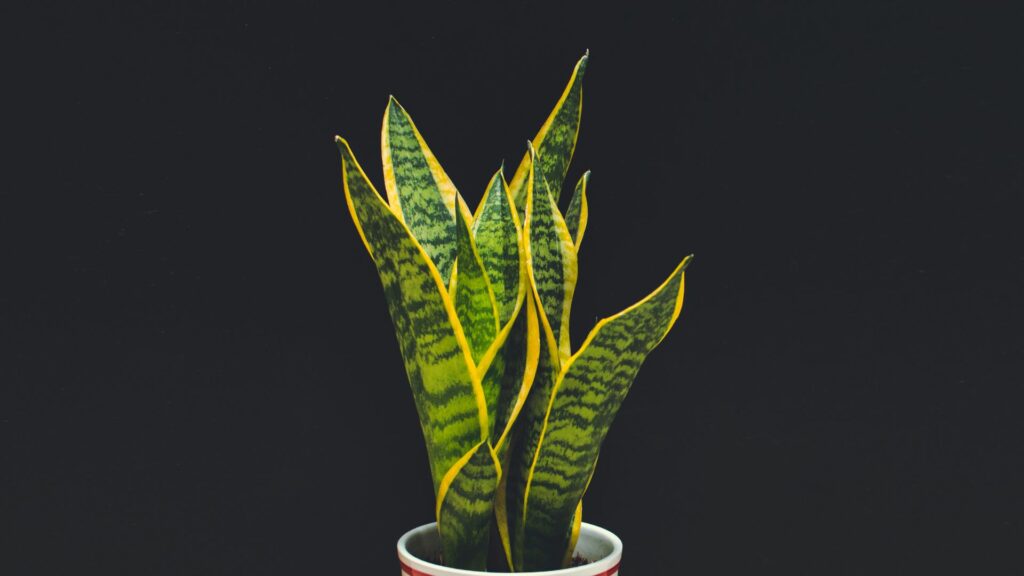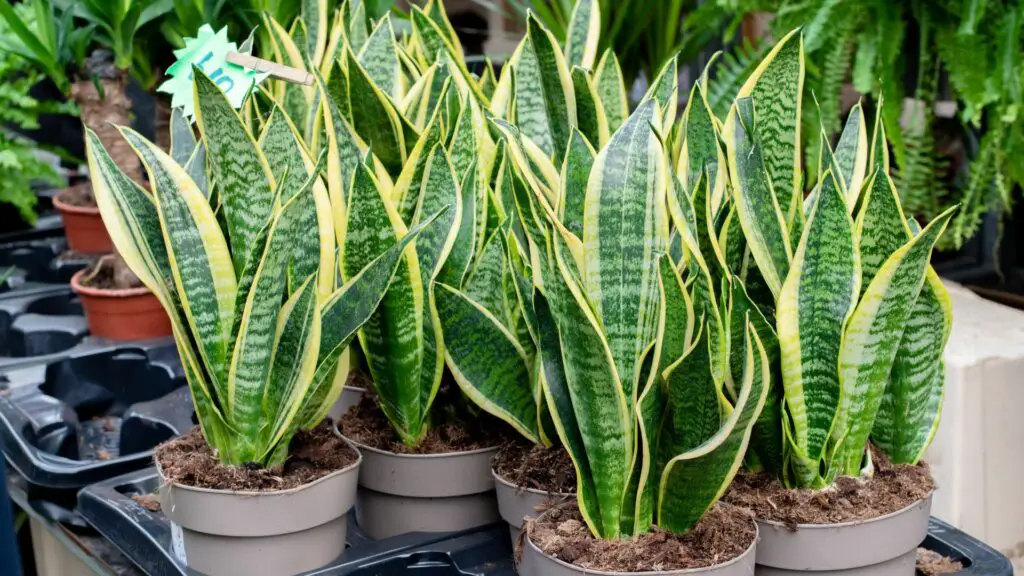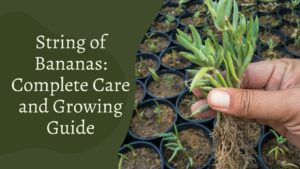
Snake plant flower are an excellent indoor plant. You may leave them unattended for months during the winter while on vacation and they will be OK. And there are so many different kinds and sorts to pick from. Though it’s rare to see these blossoms, these resilient, ever-present houseplants do occasionally bloom. The lone exception is a bunch of Sansevieria trifasciata ‘Hahnii’, often known as bird’s nest plants, which do not blossom.
Sansevieria Trifasciata is the most common snake plant (Dracaena Trifasciata). However, most plants in the Sansevieria genus, including many Trifasciata varieties, seldom blossom.
Snake plant care
We’ve gathered all the professional advice you’ll need on how to care for snake plants, from where to place one to how often to water it, and more, so you can get the most out of your lovely specimen. Here are the essential details you’ll need to guarantee that this indoor garden classic takes center stage in your plans.
DON’T WET IT TOO MUCH.
The only real hazard is overwatering your snake plant, which is quite easy to do. Keep the compost as dry as possible, especially throughout the winter. In the winter, water only enough to keep the soil from drying up entirely.
Water your snake plant sparingly throughout the summer, allowing the top half of the soil to dry between watering. Always make sure the water drains properly. Allowing the plant to soak in water for an extended period of time may cause the roots to rot.

SELECT THE APPROPRIATE LOCATION
When it comes to snake plant maintenance, your plant will grow in full sun but will also survive in partial shade — it’s not picky. It doesn’t like gloomy areas like hallways, and because of its upright inclination and the fact that it doesn’t mind draughts, it works well as a stair plant.
APPLY COMPOST THAT IS BASED ON THE SOIL
For bigger snake plants, where the weight of the soil is required to balance the rather heavy, long leaves, use a soil-based compost. If your snake plant is tall, add some horticultural grit and place it in a sturdy pot to keep it from tumbling over. Smaller plants such as Sansevieria trifasciata ‘Hahnii,’ will thrive in a general-purpose cactus potting soil.
What do snake plant flower smell like:
The aroma of snake plant blooms is noticeable. As soon as you come into the room, you can smell it. These blooms have a pleasant scent and are quite fragrant. This particular perfume is difficult to describe, as it differs from one Sansevieria species to the next.
The chemical makeup of the Sansevieria Trifasciata Laurenti flower aroma, for example, has roughly 69 distinct chemicals such as esters, alcohol, and aldehydes. And the chemical makeup of the perfumes of flowers of Sansevieria Trifasciata is extremely different compared to that of Sansevieria Cylindrica.
The scent is particularly potent at night. The blossom closes during the daytime and opens again after it gets dark. Nectar is abundantly produced by each blossom. This sticky, sweet-smelling nectar might drip down the stem and sparkle like dew drops.
Though it appears to be a nice idea, it can occasionally result in a disaster. You may avoid this by wrapping paper towels around the container during the blooming weeks. Pests are attracted to flowers because of their intense scent and the presence of delicious nectar. If you leave the plant outside at this period, it will undoubtedly attract a large number of insects. It’s best not to take your plant outside if it’s planted in an indoor pot, especially during the flowering season.

How to make snake plant bloom fast:
Plant your snake plant in the appropriate size pot, make sure it receives enough water, expose it to more sunshine, fertilize it on a regular basis, and check for indications of pests and disease on a regular basis to help it develop quicker. Even though snake plants are among the most hardy houseplants, they require certain conditions to flourish and develop. There are simple strategies to encourage rapid development in your snake plant if you see it isn’t growing.
Select the Proper Pot
It’s critical to pick the right container size for your snake plant when planting or repotting it. Smaller pots are ideal for snake plants. You may notice a transient rise in your plant’s growth rate if it becomes slightly rootbound. It’s also possible that it’ll give birth to additional puppies.
Snake plants thrive in tiny containers. If your snake plant flower is slightly root bound, it will grow quicker and produce more pups for a short period of time. Your plant will cease developing if it is completely root bound. This indicates that it’s time to replant.
To encourage optimal development, place your plant in a pot that is 1–2 inches (2.5–5 cm) wider than the previous one. However, if the plant gets completely rootbound, it will stall or cease growingChoose a pot that is 1–2 inches (2.5–5 cm) wider than the previous one to let the roots to develop without risking root rot.
Water in the Appropriate Amount
Your snake plant’s development might be hampered by both underwatering and overwatering. A plant that is submerged is deprived of the nutrients it requires to thrive. This may be remedied by increasing your watering schedule.
Plants that are submerged in water lack the nutrients they require to thrive. Root rot can occur in snake plants with too much water. Look for indicators of root rot if your plant won’t grow and the soil is always moist. If your plant develops root rot, you should address it right away.
Your snake plant should begin to develop again once the root rot has been removed. If your plant is overwatered, the soil may remain moist for an extended period of time, creating root rot.
If your plant isn’t growing and the soil is always damp, you should take it out of the container and look for symptoms of root rot in the root ball. When you notice damp, brown roots, intervene quickly to save the plant from root rot. Your plant should be able to develop normally after the issue has been fixed.
Increase the amount of sunlight that your snake plant receives.
Snake plants require a lot of bright, indirect light to thrive. If your plant isn’t growing in a gloomy room or dark corner, try moving it to a bright position near a window for a few weeks to see if it grows faster.
Snake plants thrive under bright sunshine. If your plant is in a dark place, try moving it closer to a window to see if it grows faster. Snake plants are known to go dormant throughout the winter.
An indoor grow light can help plants flourish in the winter. Snake plants typically become dormant during the winter months when there isn’t as much natural sunshine. To help your snake plant flourish over the winter, use an indoor grow lamp to replicate indirect sunlight.
Fertilize on a regular basis.
When snake plants are fertilized, they are more likely to grow swiftly. Fertilize your plant once every 4–6 weeks to increase its pace of development. Full-strength fertilizer, on the other hand, is far too powerful for this plant species. Instead, dilute the fertilizer solution to a concentration of 14 to 12 percent.
Fertilized snake plants grow quicker. Once every 4–6 weeks, fertilize your plant. Dilute the fertilizer solution to a strength of 14 to 12 percent. It’s possible that your plant has been overfertilized if it begins to wilt, turn brown, or stop growing. Reduce the frequency of fertilization to once every eight weeks.
You may be overfertilizing your snake plant if its leaves become dark or cease developing despite optimum growth circumstances. In this scenario, reduce the frequency to once every 8 weeks and see whether growth resumes.

Look for pests.
If your plant still won’t grow after you’ve made all of the above modifications, look for evidence of a pest infestation. Snake plant pests wreak havoc on the plant and limit its growth.
Infestations of pests can harm and impede the growth of your snake plant. Spider mites can be identified by thin white webs. Mealy bugs are little white insects or tiny cotton-like particles on the leaves. To get your plant growing again, get rid of any infestations.
Spider mites may be present if you detect tiny white webs on your snake plant. Mealy bugs may be present if you detect little white insects or what appear to be tiny shreds of cotton on your snake plant. Once you’ve gotten rid of the usual bug infestation, your plant will start to thrive again.
Benefits of using a snake plant:
Obtain the elimination of potentially hazardous pollutants. Snake plants are also well-known for their ability to clean the atmosphere of harmful air pollution. Even though their contributions are minor, snake plants have the capacity to absorb cancer-causing pollutants like as CO2, benzene, formaldehyde, xylene, and toluene.
One out of every 100 snake plants develops this unusual blossom; otherwise, because to the conditions under which they are cultivated, it is impossible to collect them all.
What does it mean when a snake plant flower:
Snake Plant flower meaning is associated with good fortune and brings positive energy into the environment. They not only clean the air, but they also deliver oxygen at night, which helps you sleep better. They have the ability to protect themselves from negative energy.
Place it in the southern or eastern corners if you want it to have positive feng shui. Because of its pointed leaves, which resemble a standing snake, this plant is known as a snake plant. The Chinese kept these Snake Plants indoors because they are a valuable house plant, as the Eight Gods bestowed their eight qualities on everyone who held one.
Cylinderical snake plant flower:
Sansevieria, also known as mother-in-tongue, law’s is an attractive plant that is often used to beautify the interior of homes because it can thrive in low-water and low-light environments. The leaves of Sansevieria are firm, succulent, and tapering at the tip.
Because of its pointy form, it’s known as the mother-in-tounge law’s plant. Sanseviera has the advantage over other plants in that it can absorb poisonous compounds such as carbon dioxide, benzene, formaldehyde, and tricholoroethylene.
Sansevieria is split into two categories, the first of which is Sensevieria Cylindrica, which includes the type that develops elongated upward with a size of 50-75 cm and the type of short-leaved circular rosette that is 8 cm long and 3-6 cm broad.
Plant with a snake Cylindrica is a perennial succulent plant that is evergreen. These plants are the ideal choice for novices who wish to grow this variety of mother in law’s tongue since they grow in dense stands and spread by creeping rhizomes under the soil in the wild.
The cylindrical leaves of the africa spear plant are its distinguishing feature. Cylindrical snake plant is the common name for this plant. Smooth leaves are dark green in hue, with some tubular leaves having green-grey variegation. This plant is drought resilient because it has thick leaves that hold water. In rainy but not too wet circumstances, this sansiviera may grow and thrive as expected.
Mother in law Tounge flower:
Snake plant, commonly known as mother-in-tongue law’s or Sansevieria Trifasciata, is a popular houseplant. This tough indoor succulent plant can withstand poor light, drought, and neglect. Long, upright sword-shaped green leaves with yellow borders distinguish the snake plant.
The mother-in-tongue law’s grows well in a wide range of light conditions, preferring well-draining loamy soil and moderate humidity. During the growth season, fertilize once a month. Sansevieria plants, sometimes known as mother-in-law plants, are blooming Sansevieria plants that are endemic to tropical Africa.
Sansevieria trifasciata is a flowering plant of the Sansevieria genus. Long flower stalks covered with buds grow on this plant. The buds produce stunning white or cream-colored blooms when they bloom. A pleasant aroma emanates from the little clusters of lily-like white blossoms. In the spring, the mother-in-tongue law’s blooms.
Mother-in-Tongue Law’s Houseplant Benefits:
One of the benefits of the mother-in-tongue law’s plant (Sansevieria) is that it filters pollutants from the air, according to a NASA research. Growing this sort of snake plant has the benefit of removing pollutants such as benzene, formaldehyde, xylene, and nitrogen oxide from the air.
Mother-in-tongue law’s is an excellent plant to have in your bedroom since it cleans the air and grows in low light.
Mother in law flower plant:
Flowers develop along with tall flower spikes or stalks as it blooms. Small, honeysuckle-like greenish, cream, or white blooms adorn these spikes, which can grow up to 3′ tall. There’s no way of knowing how long the flowers will persist.
When they do die back, cut the flower stalks off at the base to help the plant conserve energy and create a more tidy appearance. Despite their beauty, these blooms are not usually strong enough to be utilised in floral arrangements.
Why is my snake plant is curling:
Knowing what to look for might help you prevent or control curling leaves. An infestation of thrips is the most likely cause of leaves curling on mother in law’s tongue and other snake herbal species. Thrips are a little nuisance that you might not even notice.
However, what you see is the effect of the infection. You’ll see and feel rough spots in addition to the snake plant curled leaves. The outcome of the bug munching on the leaves is this. Thrips may injure and even kill your plant, but they can also spread viral illnesses, so it’s critical to cure them.
When does a snake’s flower bloom?
Flowers only appear on Snake plants that are grown outside, and just once a year, in the spring. More significantly, the snake plant’s growing blossoms indicate that it is likely stressed. Lack of water and sunshine might cause the snake plant to be neglected because it requires little to no cultivation.
This is an indication that the plant needs to encourage flower growth in order for the blossom to expand, take root, and become healthily again.
Snake plant flower stalk:
You’ll find tiny buds dispersed over a lengthy blooming stalk if your snake plant blossoms on a very uncommon occasion. This stalk may grow up to three feet tall, occasionally towering over the snake plant’s leaf tips. Snake plants are rarely found with more than one stem.
Hundreds of little tubular blooms with thin petals grow in groups on these stems. Honeysuckle or little lily blossoms are the most similar to these tiny flowers. Some cultivars do not produce stalks. Their blooms, on the other hand, bloom in enormous clusters towards the plant’s base.
Snake plants come in a variety of colours, and their blossoms are likewise distinctive. These hues often vary from white to cream to greenish-white to yellow. The blossoms are particularly striking against the snake plant’s contrasting foliage. While the blooms are uncommon, when they do bloom, they are stunning in appearance and have a powerful perfume.
The truth is that no one knows how to make a snake plant blossom. Several factors come into play, including the plant’s age. Snake plants will sometimes only blossom if their fundamental needs are addressed, and they can be deceived into flowering with a little neglect.
Conclusion:
Snake plants are hardy and may be utilized as houseplants or as decorations for outdoor areas. They are attractive, low-maintenance, and an excellent choice for decorating your house or business. Although the blossoms of the snake plant are attractive, they are delicate and do not last long after being clipped. When these blooms are alive, they exude a sticky nectar that can be exceedingly stinky and unpleasant.
Snake plants, unlike other houseplants, do not always blossom when growing under ideal conditions. However, getting your snake plant to blossom might be difficult since they only flower under certain stressful conditions. It might be difficult, time-consuming, and perplexing to get your snake plant to bloom. However, once you see those white-colored flowers for the first time, you’ll be hooked.

Hi This is Maria, We are a team of gardening enthusiasts with a passion for gardening. We have tried to bring you tips and advice enabling you to grow and maintain a healthy and beautiful garden. We Hope You Find it Useful.






